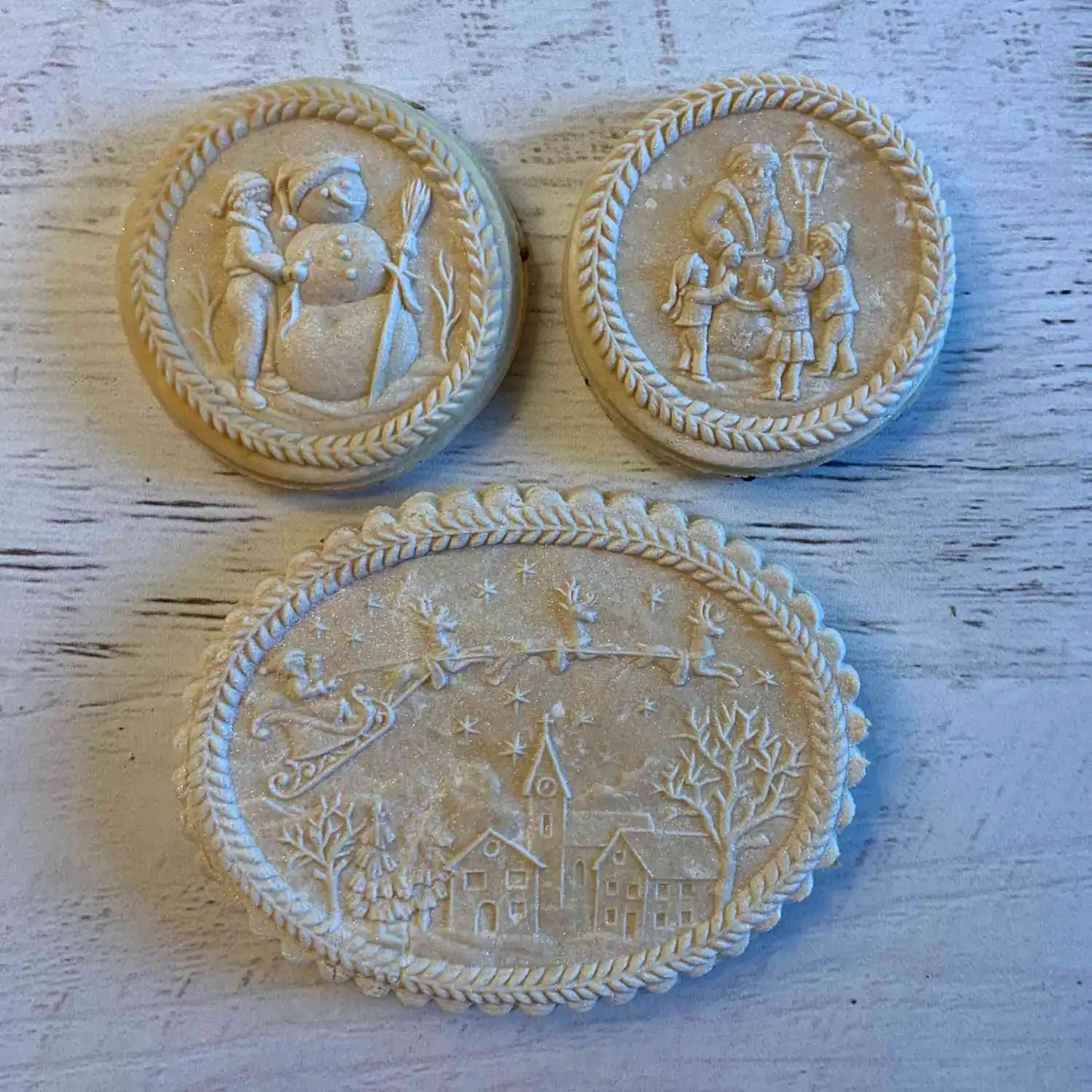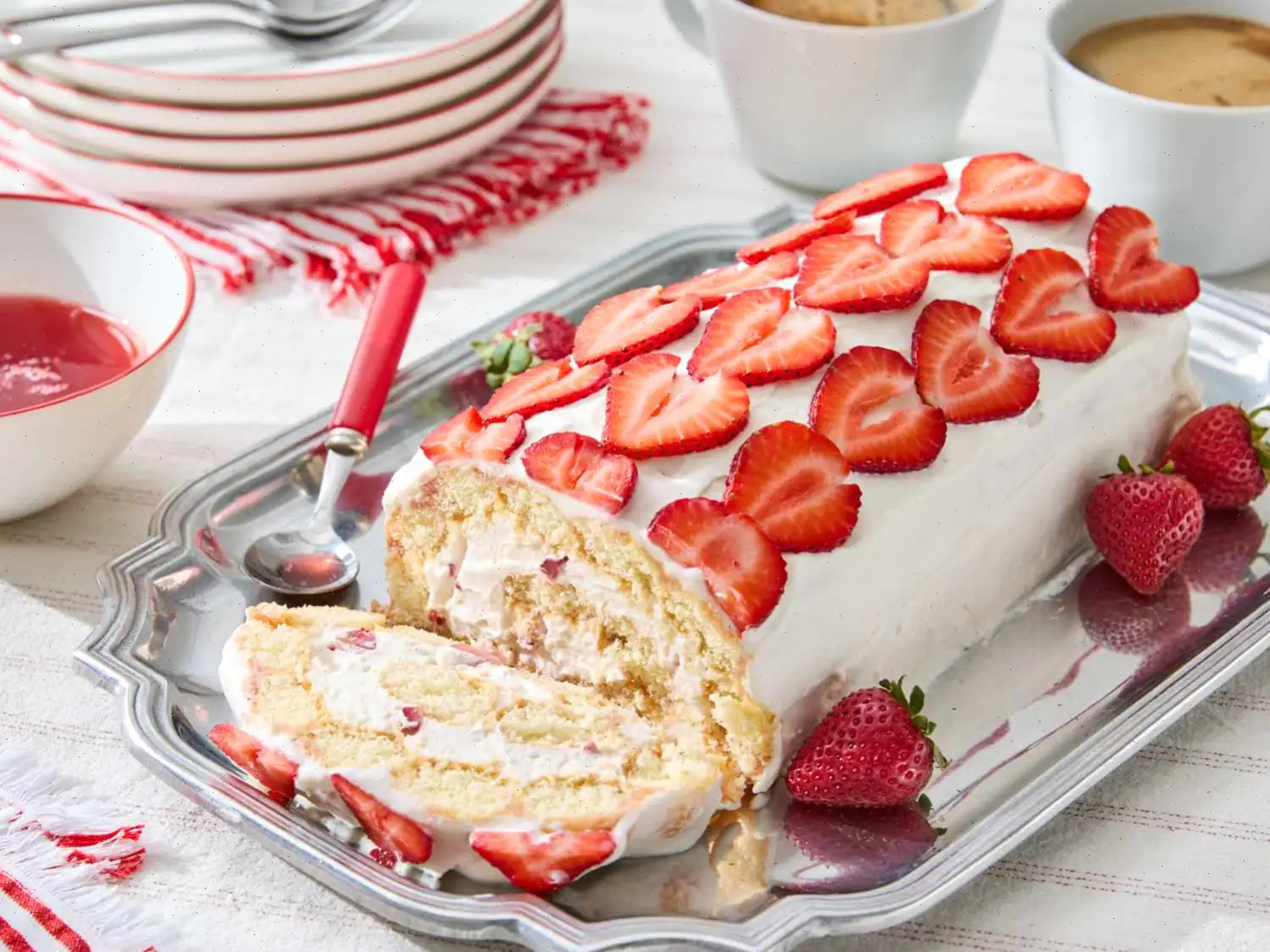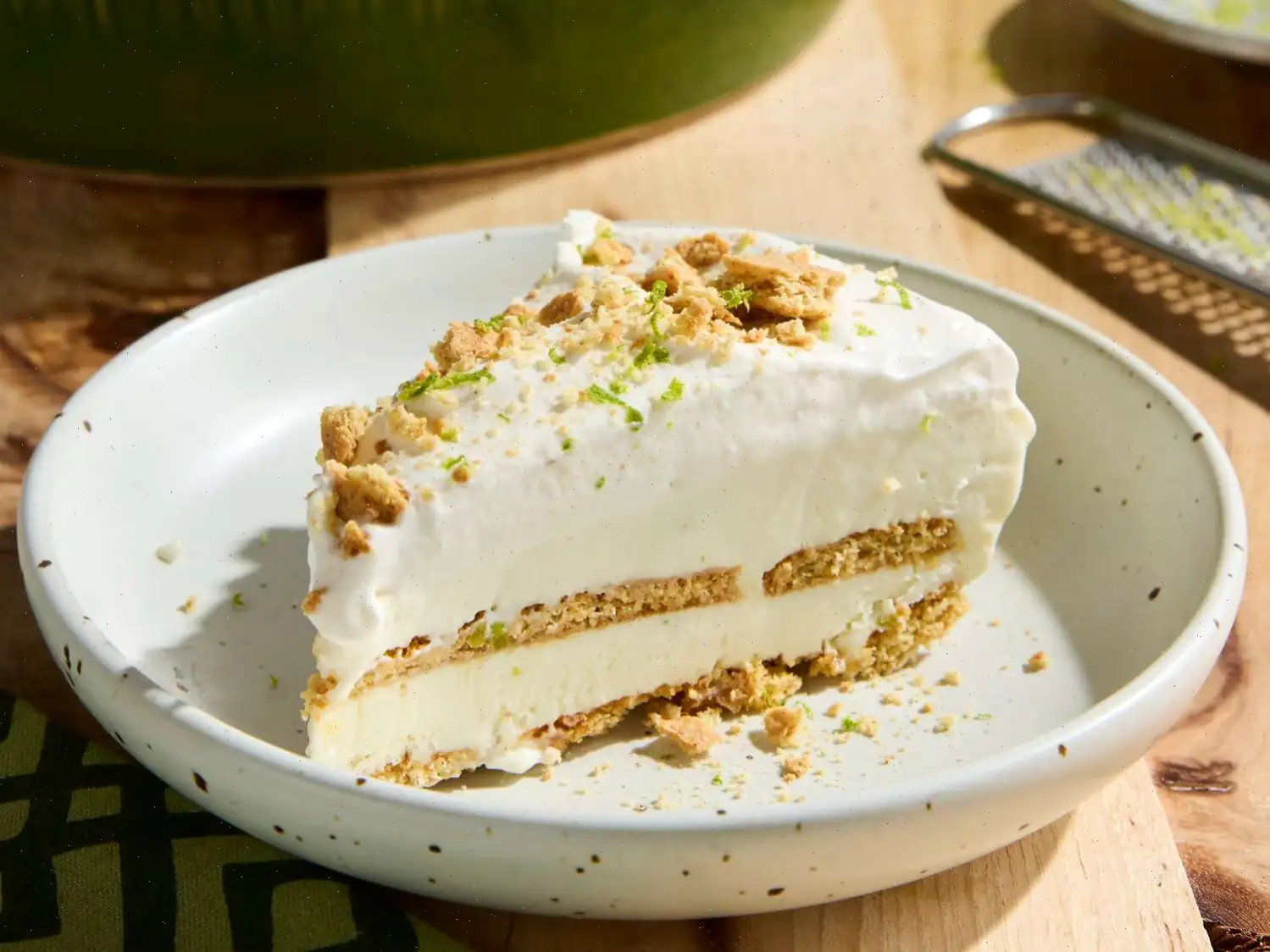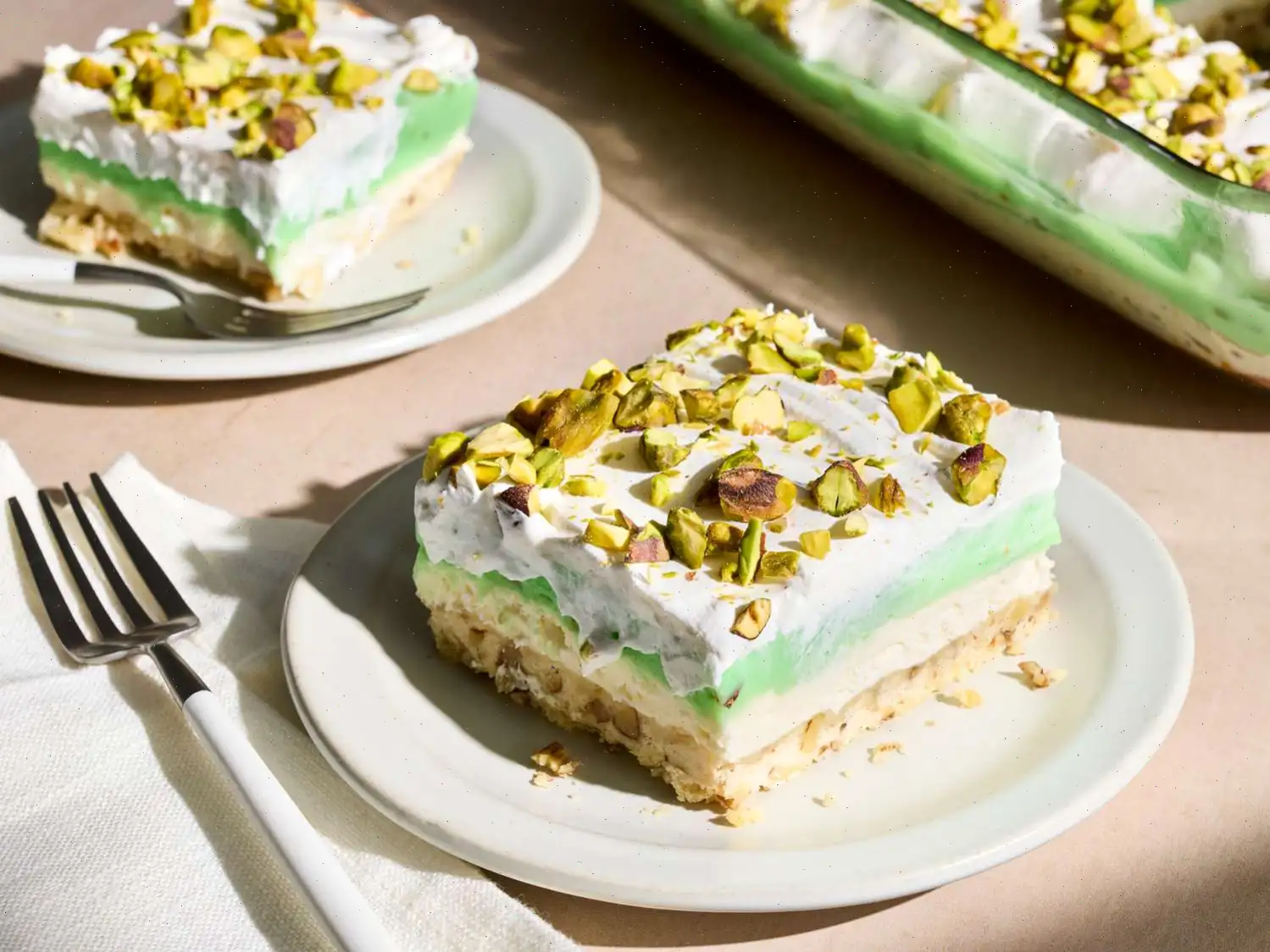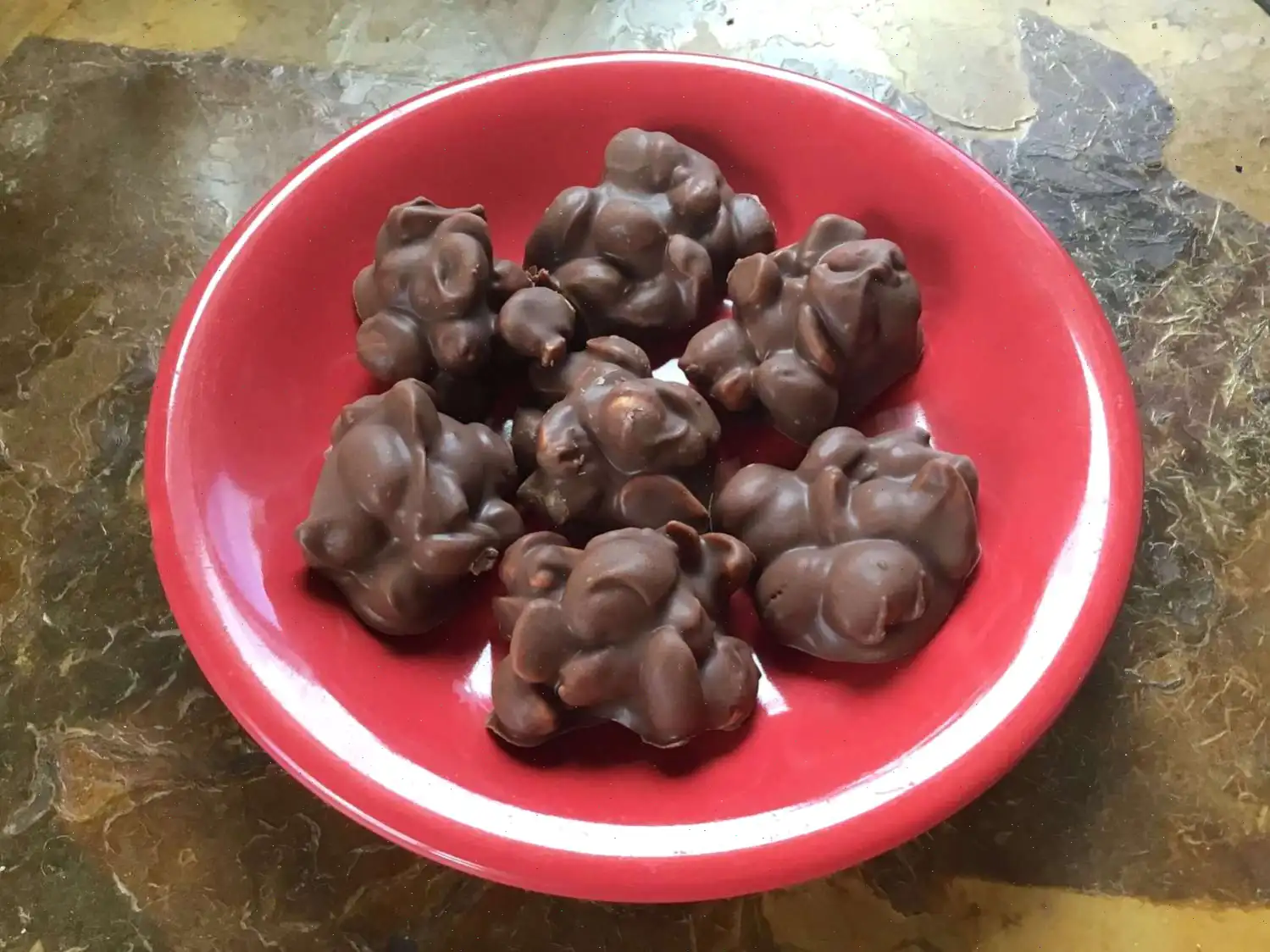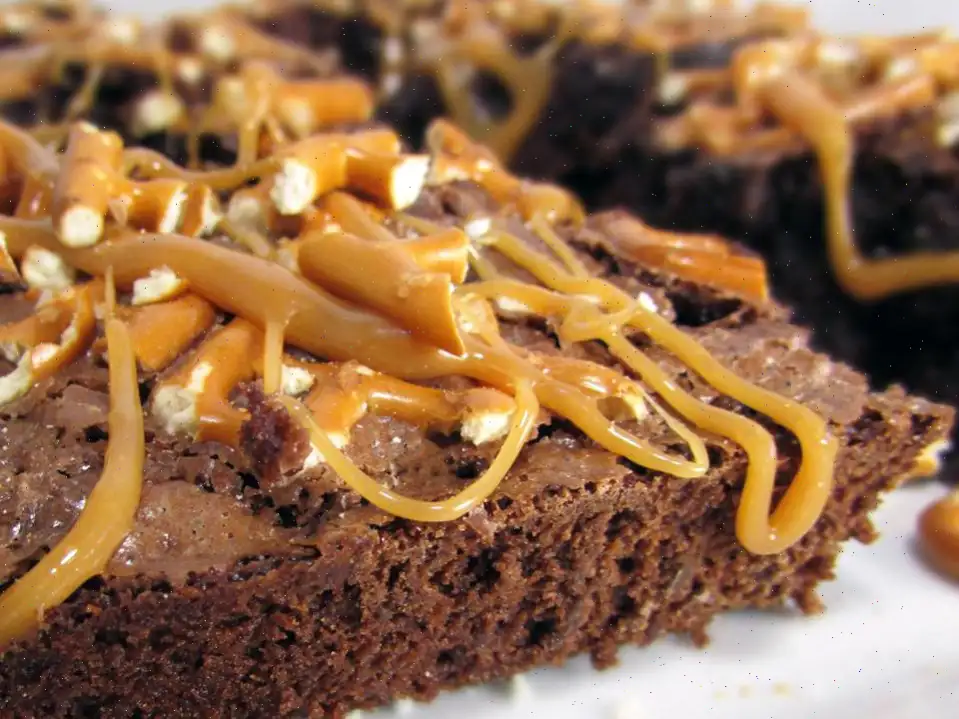
Traditional Springerle Recipe
This traditional springerle cookie recipe is an elegant, impressive, and absolutely delicious way to celebrate the holiday season.
What Is Springerle?
Springerle is a type of German cookie that is typically served during the Christmas season. These anise-flavored cookies, which are usually square and feature embossed designs, date back to at least the 14th century.
Springerle Ingredients
Here's what you'll need to make this simple springerle recipe:
- Anise seeds: Crushed anise seeds form the base of the flavor in these cookies.
- Flour: All-purpose flour helps to provide structure to the dough.
- Baking powder: It acts as a leavener, helping the cookies rise during baking.
- Sugars: You'll need both granulated sugar and confectioners' sugar for a balanced sweetness.
- Eggs: Eggs add moisture and help bind the dough together.
- Vanilla extract: A dash of vanilla enhances the overall flavor.
How to Make Springerle
Follow these simple steps to create your own delicious springerle cookies:
- Make the dough: In a large bowl, mix the flour and baking powder together. In another bowl, beat the sugar, eggs, and vanilla with an electric mixer until light and frothy, about 5 to 8 minutes. Gradually stir in the flour mixture until it forms a thick dough.
- Roll and stamp the dough: Working with small amounts of dough at a time, roll it out on a lightly floured surface to about 1/4 inch thick. Sift a light layer of confectioners' sugar over the dough. Then, press the springerle molds into the dough, ensuring the design is clearly imprinted. Carefully remove the mold, and use a small knife to cut around each cookie. Place the cookies about 2 inches apart on prepared cookie sheets.
- Let the cookies dry: Cover the cookies with a lightweight cotton cloth and let them sit for about 8 hours or overnight. This helps the designs remain crisp during baking.
- Bake the cookies: Preheat the oven to 250F (120C). Bake the cookies for 25 to 30 minutes, or until they are pale golden brown and set. Remove from the oven and allow to cool completely on a wire rack.
How to Store Springerle
Springerle cookies are perfect for storing, as they last for a long time. In fact, the anise flavor develops further over time, so its best to make them ahead of time. Store them in an airtight for up to two months.
Can You Freeze Springerle?
While it is possible to freeze springerle cookies, it's not recommended. Freezing may alter the texture, making them more cake-like after thawing.
Community Tips
"Love this recipe... the detail on my impressions is clear and crisp," says Kindra Loy Lee. "They became crisper after baking. I use a pastry brush to brush off excess powdered sugar after they have baked and cooled."
"These were great," says greenbabby. "My mom said they were just like her mom used to make. I added a little lemon zest, as thats how my grandma made them."
"They turned out BEAUTIFULLY," raves Caroline Victoria. "They're almost too pretty to eat, but of course you must try them, and are they ever good!!! I love them with Chai tea."
Ingredients
- Cooking spray
- 1 tablespoons crushed anise seeds
- 3 cups all-purpose flour
- 1 teaspoon baking powder
- 2 cups sugar
- 4 eggs
- teaspoon vanilla extract
- cup confectioners' sugar
Directions
- Spray 4 cookie sheets with cooking spray and sprinkle with anise seeds. Set aside until needed.
- In a large bowl, mix the flour and baking powder together until well blended. In another large bowl, beat the sugar, eggs, and vanilla with an electric mixer until light and frothy, about 5 to 8 minutes.
- Gradually stir the flour mixture into the egg mixture until a thick dough forms.
- Working with handfuls of dough at a time, roll it out on a lightly floured surface to inch thickness. Lightly sift confectioners' sugar over the dough.
- Place the springerle molds onto the dough and press down evenly and firmly until the design is imprinted. Remove the mold and cut around each cookie using a small knife. Place the cookies about 2 inches apart on the prepared cookie sheets.
- Cover the cookies with a lightweight cotton cloth and allow them to dry for 8 hours or overnight.
- Preheat the oven to 250F (120C). Bake the cookies for 25 to 30 minutes, or until the tops are pale brown and the cookies are set. Transfer to a wire rack to cool completely.
- Store in an airtight .
Cooks Note
Springerle molds can be difficult to find, but specialty cookware stores and antique shops may carry them.
Nutrition Facts (per serving)
- Calories: 75
- Fat: 1g (1% DV)
- Saturated Fat: 0g (1% DV)
- Cholesterol: 16mg (5% DV)
- Sodium: 16mg (1% DV)
- Total Carbohydrates: 16g (6% DV)
- Dietary Fiber: 0g (1% DV)
- Total Sugars: 9g
- Protein: 2g (3% DV)
- Calcium: 11mg (1% DV)
- Iron: 1mg (3% DV)
- Potassium: 19mg (0% DV)

History of Springerle
Springerle cookies have a rich and storied history that dates back to medieval Europe, particularly in the southwestern regions of Germany and Switzerland. Their name is derived from the German word "springen," meaning "to jump," referring to the way the dough rises after baking. These delicate, anise-flavored biscuits were originally made as holiday treats, often at Christmastime, and were a staple in festive celebrations. Springerle were traditionally crafted using carved wooden molds, each depicting intricate patterns or scenes, from nativity images to scenes of everyday life, reflecting the culture and values of the time.
Regional Variations
While Springerle are beloved throughout Germany, their specific preparation and decoration can vary from region to region. In some areas, the molds used are particularly ornate, depicting scenes from folklore, while in others, the cookies are simpler but no less delicious. In the Swabian region, for example, Springerle cookies are often made with a slightly softer dough, while in Bavaria, they might incorporate different flavorings such as lemon zest or almonds. Despite these regional twists, the one constant is the use of anise, which imparts a unique flavor that defines the cookie.
How Springerle Differs from Similar Cookies
Springerle cookies stand out from other holiday treats due to their distinctive texture and method of preparation. Unlike many other cookies, which are either chewy or crisp, Springerle are known for their firm, dry texture. This is due to the lengthy drying process before baking, which helps to preserve the detailed mold patterns. In contrast to similar European cookies, such as the Italian pignoli or the French "biscuit de Nol," Springerle's main feature is its deep, embossed design, a result of pressing the dough into highly detailed wooden molds or rolling pins. The anise flavor is another distinguishing factor, setting Springerle apart from other spiced or fruity cookies typically seen during the holiday season.
Where Springerle Are Typically Served
Springerle cookies are most commonly enjoyed during the Christmas season, particularly in Germany, Austria, and Switzerland. They are a traditional part of the Christmas cookie plate, often alongside other German favorites like lebkuchen (gingerbread) and stollen. In these regions, it is customary to serve Springerle with a warm cup of tea or mulled wine. These cookies also make for an impressive gift, with their detailed designs and long shelf life. Outside of their home countries, Springerle can occasionally be found in specialty European bakeries or at holiday markets, particularly during the winter months.
Interesting Facts About Springerle
- The molds used for Springerle cookies are often passed down through generations and can be highly collectible, with some antique molds fetching high prices at auctions.
- In some parts of Germany, the designs on the Springerle molds were believed to have symbolic meanings, with patterns representing blessings for the home, health, and prosperity in the coming year.
- Springerle cookies can last for several weeks or even months, and their flavor intensifies over time. In fact, they are often made ahead of the holiday season to allow the flavors to develop fully.
- Despite their delicate appearance, Springerle were once considered a symbol of wealth and status, as the time-consuming process of making them required a certain level of skill and resources.
FAQ about Traditional Springerle Recipe
Comments
Kimberly Carter
07/16/2023 12:43:24 PM
I have fond memories of enjoying this treat from my neighborhood bakery as a child. Thanks to your recipe, I was able to recreate it perfectly at home. I rolled out the dough using a standard rolling pin and then used a special one for the beautiful imprint. The result was absolutely fantastic! Thank you, Karen M.
Carolyn Johnson
06/21/2024 10:21:17 AM
My dough was too moist at first as well. I ended up adding extra flour to make it easier to roll out. I also incorporated anise oil to intensify the flavor.
Joseph Jones
10/19/2022 04:30:22 PM
No modifications made.
Jonathan Taylor
10/02/2022 11:52:08 PM
My dough turned out too wet, so I had to add extra flour to make it easier to work with. I decided to skip the anise seeds and added lemon zest instead. However, the dough was sticking to my rolling pin a lot, so I switched to my regular cookie cutters. I think I'll try a more traditional recipe next time.
Thomas Hernandez
06/03/2023 10:43:53 PM
I tried using the Springerle press featuring Santa and his reindeer flying over the village as shown in the picture on this recipe. The dough proved to be difficult to handle due to its tendency to cling to the press. As a result, the scene was often difficult to distinguish, which defeats the purpose of using a Springerle press.
William Young
01/16/2024 02:44:11 PM
This was my first experience tasting these cookies, and I must say, I agree with the majority of reviews. They turned out fantastic! Initially, I didn't sprinkle enough powdered sugar on top, which caused the cookies to stick to the mold. However, on the second attempt, I got it right and they came out perfectly.
Lisa Rivera
02/01/2023 03:28:23 PM
The recipe itself is solid, and I believe my problem stemmed from my own mistake or lack of experience. I opted not to include anise seeds as my partner doesn't enjoy their flavor. Instead, I added 1/4 teaspoon of orange oil. The cookies turned out flavorful, albeit they expanded significantly during baking. I suspect I may not have allowed them to dry thoroughly before placing them in the oven. While they weren't a complete failure, they didn't turn out visually appealing enough to be showcased in photos.


